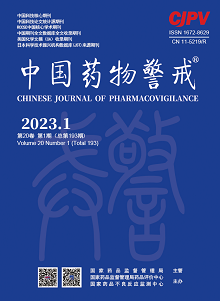|
|
Toxicity of gene therapy drug AAV5-LPLS447X (GC304) in cynomolgus monkeys
HOU Tiantian, XIA Yan, PAN Dongsheng, HUO Guitao, MA Xuemei, LIU Ziyang, SUN Li, LIU Yi, YAN Jian'ao, WU Xiaobing, ZHOU Xiaobing, LIU Guoqing, GENG Xingchao
2023, 20(1):
27-33.
DOI: 10.19803/j.1672-8629.20220341
Objective To determine the toxicity of gene therapy drug AAV5-LPLS447X (GC304) in cynomolgus monkeys. Methods Thirty cynomolgus monkeys were divided into the vehicle control group, low-dose group and high-dose group before being injected with vehicle, 3×1013 vg·kg-1 and 1×1014 vg·kg-1 GC304 respectively. During the study, All animals had their clinical symptoms and injection sites observed while food consumption and body weight were measured weekly. Immunogenicity tests (involving anti-AAV5-binding antibodies, anti-AAV5-neutralizing antibodies, and anti-LPL-binding antibodies), hematology, clinical chemistry, coagulation parameters and urinalysis were performed at different time points before and after administration, while T lymphocyte typing and cytokines, ECG, blood pressure, body temperature and ophthalmology were observed. At 4 weeks and 6 months after administration, cynomolgus monkeys were dissected for gross observation, organ weight and histopathological examination. At the same time, biodistribution of GC304 was studied and expression products were determination, and the target gene DNA in blood was detected at different time points. Results The clinical symptoms, injection sites, body weight, food consumption, eye indexes, body temperature, blood pressure, electrocardiogram, blood coagulation, clinical chemistry, T lymphocyte typing, urine, cytokines and organ weight were normal. Platelets in the high-dose group decreased 4 weeks after administration. Histopathological changes associated with the test article were active germinal centers in the spleen and inguinal lymph nodes with increased chromosomal macrophages. Both a low dose and a high dose caused cynomolgus monkeys to produce anti-AAV5 binding and anti-AAV5 neutralizing antibodies, and the two antibodies remained at high levels 6 months after administration, but there was no obvious “dose-effect” relationship. Anti-LPL antibody production in cynomolgus monkeys was not significantly induced after administration of GC304. The results of qPCR detection showed that the test article was widely distributed and expressed in the peripheral blood and organs of cynomolgus monkeys, but concentrated in the liver. Conclusion Cynomolgus monkeys can be singly dosed with GC304 via intravenous injection, which is well tolerated without obvious toxic reactions, and GC304 is mainly distributed and expressed in the liver, which can provide data for subsequent clinical trials.
References |
Related Articles |
Metrics
|

